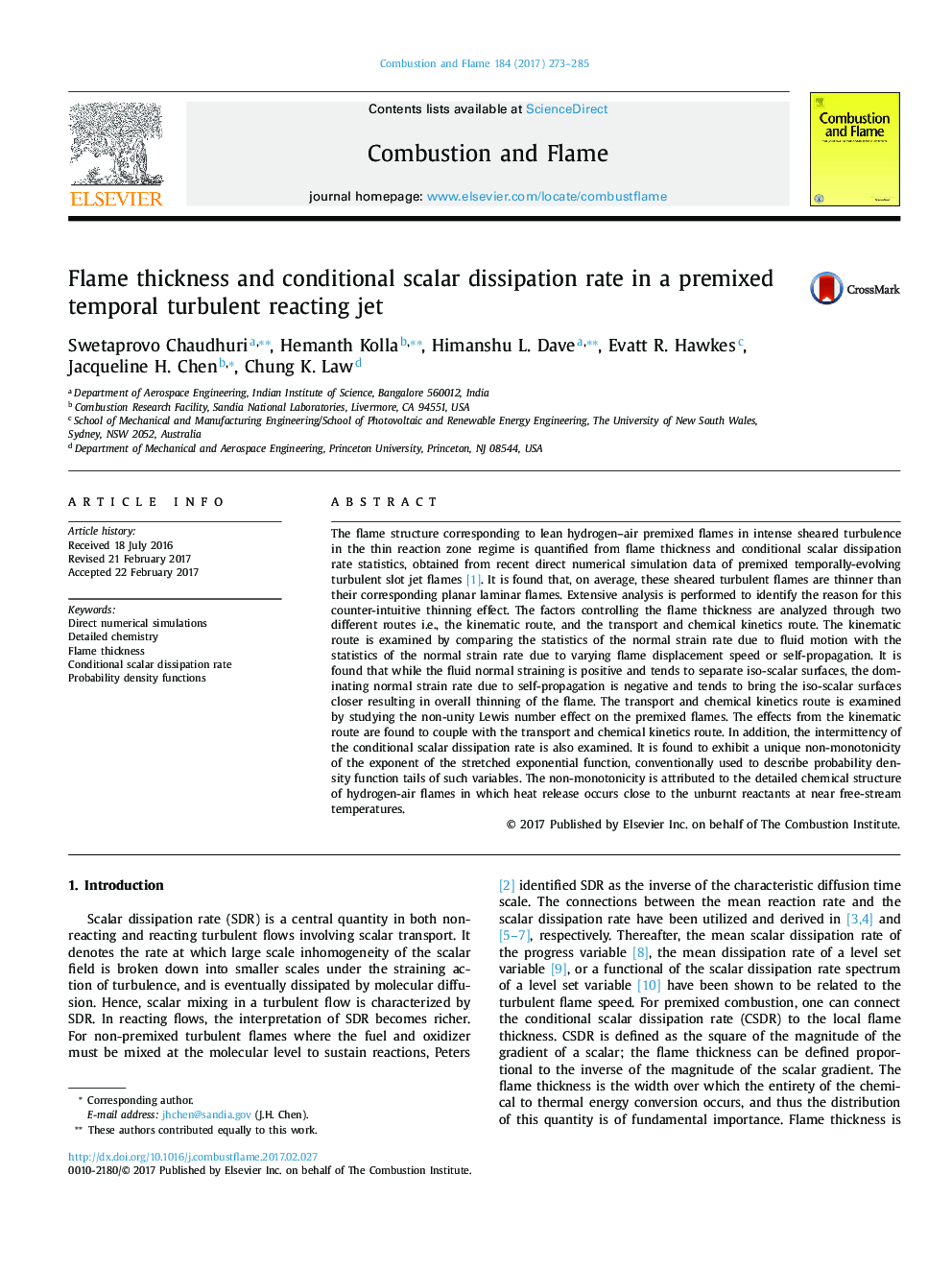| کد مقاله | کد نشریه | سال انتشار | مقاله انگلیسی | نسخه تمام متن |
|---|---|---|---|---|
| 4764463 | 1423553 | 2017 | 13 صفحه PDF | دانلود رایگان |
عنوان انگلیسی مقاله ISI
Flame thickness and conditional scalar dissipation rate in a premixed temporal turbulent reacting jet
ترجمه فارسی عنوان
ضریب شعله و میزان انحلال اسکالر شرطی در یک جت واکنش آشفته لحاظ شده
دانلود مقاله + سفارش ترجمه
دانلود مقاله ISI انگلیسی
رایگان برای ایرانیان
کلمات کلیدی
شبیه سازی عددی مستقیم، شیمی تکمیلی، ضخامت شعله نرخ انحراف اسکالر شرطی، توابع چگالی احتمال
موضوعات مرتبط
مهندسی و علوم پایه
مهندسی شیمی
مهندسی شیمی (عمومی)
چکیده انگلیسی
The flame structure corresponding to lean hydrogen-air premixed flames in intense sheared turbulence in the thin reaction zone regime is quantified from flame thickness and conditional scalar dissipation rate statistics, obtained from recent direct numerical simulation data of premixed temporally-evolving turbulent slot jet flames [1]. It is found that, on average, these sheared turbulent flames are thinner than their corresponding planar laminar flames. Extensive analysis is performed to identify the reason for this counter-intuitive thinning effect. The factors controlling the flame thickness are analyzed through two different routes i.e., the kinematic route, and the transport and chemical kinetics route. The kinematic route is examined by comparing the statistics of the normal strain rate due to fluid motion with the statistics of the normal strain rate due to varying flame displacement speed or self-propagation. It is found that while the fluid normal straining is positive and tends to separate iso-scalar surfaces, the dominating normal strain rate due to self-propagation is negative and tends to bring the iso-scalar surfaces closer resulting in overall thinning of the flame. The transport and chemical kinetics route is examined by studying the non-unity Lewis number effect on the premixed flames. The effects from the kinematic route are found to couple with the transport and chemical kinetics route. In addition, the intermittency of the conditional scalar dissipation rate is also examined. It is found to exhibit a unique non-monotonicity of the exponent of the stretched exponential function, conventionally used to describe probability density function tails of such variables. The non-monotonicity is attributed to the detailed chemical structure of hydrogen-air flames in which heat release occurs close to the unburnt reactants at near free-stream temperatures.
ناشر
Database: Elsevier - ScienceDirect (ساینس دایرکت)
Journal: Combustion and Flame - Volume 184, October 2017, Pages 273-285
Journal: Combustion and Flame - Volume 184, October 2017, Pages 273-285
نویسندگان
Swetaprovo Chaudhuri, Hemanth Kolla, Himanshu L. Dave, Evatt R. Hawkes, Jacqueline H. Chen, Chung K. Law,
